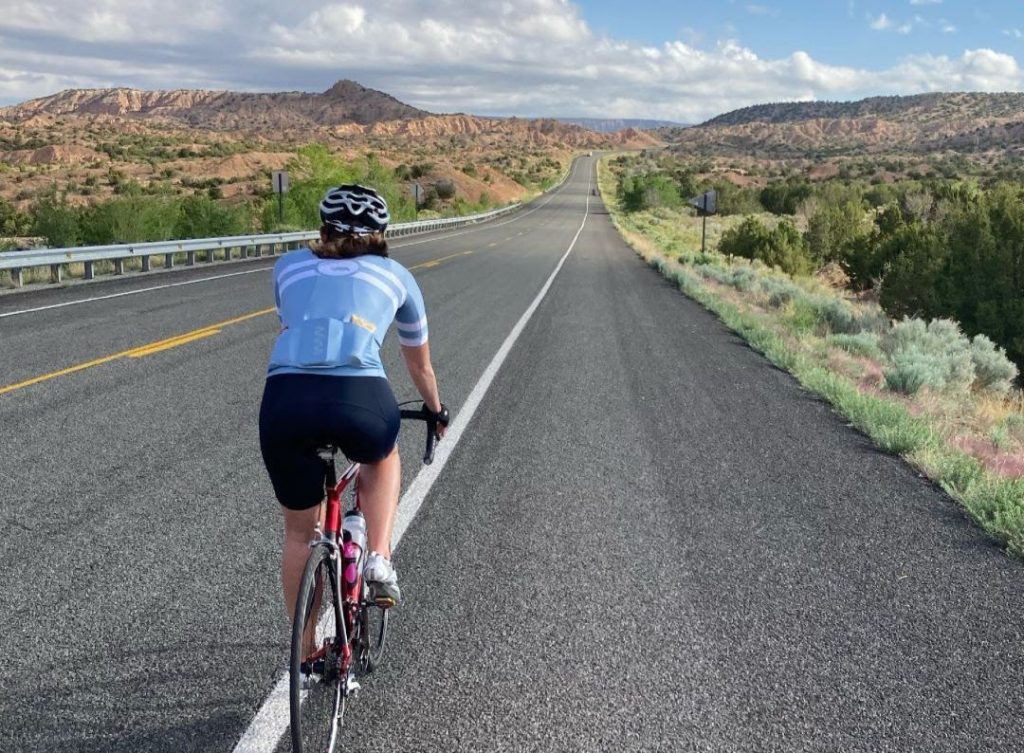Words by Coach Carson McQuarrie
It’s 2020 and you’ve decided you want to get into endurance sports. Maybe you’re new to endurance sports having never done endurance activities or perhaps you’re a seasoned veteran and considering adopting a new discipline as part of your goal in 2020? There are important sport-specific differences, however, as you embark on any endurance sport the commonalities are just as important to be aware of involving duration, metabolic systems, and physiological training zones. To help you enjoy getting the most out of your new-found activity, these commonalities are important to learn about in deciding upon a new endurance sport such as cycling, running, swimming, triathlon, xc skiing, or rowing.
Duration
When asked, people typically resort to simplistic terms to describe endurance sports with ideas of marathoners and long-distance running, triathlons with their combination of disciplines, or perhaps any activity done over a period of several hours. Well, while these certainly are endurance sports, what defines endurance sport is closely related to the activity duration and its relation to metabolic systems used. Before we cover the metabolic systems, however, the duration is a topic of its own because it reflects the duration of training an athlete will experience in relation to their sport-specific event.
People get enthralled on the visionary image of crossing the finish line after hours of sweating and pushing their mind and body to the limit but stop short thinking they have to train as hard and as long as a race every day to be ready.
The truth is any race should be longer than any workout you’d have to do in training in preparation for that event. This is because a race is the culmination of the many more hours you’ll spend training, plus there’s what’s called a “taper” which is the short 1-2 week period before a race during which volume is decreased helping you feel ready and “fresh” on race day. The simple takeaway is, while you may spend more hours training during any given week, any single workout won’t be as long and hard as the race itself. Let’s look at some examples of what may be the biggest single workout and what may be the biggest volume week for running and cycling relevant to approximate race times. Note, this does not take into account recommended stretching and strength training that may add 1-2 hrs/week each.
Running
Novice 60min 10km Race
Biggest Workout: 7-8km/40-45min run
Biggest Week: Monday 5.5km tempo run, Tuesday 2km easy run, Wednesday 4km interval run, Thursday off-day, Friday 5.5 tempo run, Saturday long run, Sunday off-day.
Total hours = approx. 2.5-3hrs
Intermediate 3hr Marathon Race
Biggest Workout: 28-32km/2hr15min-2hr30min run
Biggest Week: Monday 10-12km tempo run, Tuesday 5km easy run, Wednesday 8km interval run, Thursday 5km easy run, Friday 10-12km tempo run, Saturday 28-32km run, Sunday off-day.
Total hours = approx. 5.5-6hrs. Note, to reach a 3hr marathon time runners will typically spend more weekly hours running in the base training 3+ months out from the race however the distance may not be any greater because the running is generally fairly slow and easy.
Cycling
Novice 4hr 100km Century
Biggest Workout: 3hr/approx. 65km ride
Biggest Week: Monday 1.5hr interval workout, Tuesday 45min easy ride, Wednesday 1hr tempo ride, Thursday off-day, Friday 1.5hr interval workout, Saturday 3hr ride, Sunday off-day.
Total hours = approx. 7hrs 45min
Intermediate 7hr 200km Double Century
Biggest Workout: 6hr/approx. 160km ride
Biggest Week: Monday 2.5hr tempo interval ride, Tuesday 1hr easy ride, Wednesday 1.5hr interval ride, Thursday 1hr easy ride, Friday 2hr tempo ride, Saturday, 6hr ride, Sunday off-day.
Total hours = approx. 14hrs
Metabolic Systems
Aside from the sheer time required, what allows your body to perform well at any endurance event is not by verbally telling it how long your workout(s) are, rather, let it rely on the metabolic systems in place for providing the body energy to propel movement. In other words, work hard at time-specific workouts and trust your body. While the body has many complex systems the two the body uses to create and utilize energy from food are called aerobic and anaerobic. These systems have strengths and weaknesses and are used depending primarily on the level of exertion. The reason these systems are important is that they reflect the level of exertion and type of workouts you’ll experience in training effectively for an event. Let’s cover them in simplistic terms.
Anaerobic System
The anaerobic system is used to provide short bursts of powerful explosive energy, for example, when you need to sprint to a finish line in a running race or bridge a gap between two groups in a bike race. In races beyond 15min, the anaerobic system makes up a very small fraction of endurance sport (with criterium bike races being the exception). For this reason, workouts of endurance sports won’t contain much of anaerobic efforts in relation to the total training time, perhaps a few sprints a week in a couple of months leading up to a run or bike race or a small fraction as part of a moderately difficult tempo run. Anaerobic transitions to aerobic between 90 seconds to 3 minutes of maximal effort.
Aerobic System
The aerobic system is the dominant system used by the body to fuel all endurance sports from 15min – 15hrs+. It is used when you have a hard final 5min in a 10km running race, when you have to ride for multiple hours with a 30min tempo effort at the end of a double century bike race, or a 5min hard effort before the sprint of a fondo bike race. All these varying lengths of effort after different amounts of exertion use the same aerobic system and have similar metabolic processes.
In the presence of oxygen mitochondria located inside the cells process glucose from food into a compound called acetyl coenzyme A (acetyl-CoA). Acetyl-CoA can also be formed from processing fat inside the mitochondria in the presence of oxygen. Protein can also be processed for energy but only to a very small percentage and its an unideal source of energy. The body then processes acetyl-CoA into a compound called adenosine triphosphate (ATP) which is the molecule used for energy. The key term in all these processes is oxygen. All these processes of the aerobic system utilize oxygen which extrapolates to an increase in breathing rate depending on the level of aerobic exertion whether that means simply walking or pushing the upper end of aerobic metabolism in a 3-minute effort.
You may have also expected that the shorter the event the higher the intensity, and thus subsequent workouts will often be. So, as you think about a new sport to embark on the shorter the duration of the event relative to that sport the higher intensity the workouts will be.
This explains the systems in the body but doesn’t explain the exact practical aspect of what level of exertion you’ll experience when you choose a sport and type of sport-specific discipline. That’s where training zones come in.
Training Zones
Training zones are what the endurance coaching community has used as a term that corresponds to different physiological adaptations. There are 7 commonly accepted training zones, two of which are anaerobic (6 & 7) which get used less in endurance sports. These zones are measured by either heart rate (beats per minute) or power (watts). Scientists and physiologists have learned that certain adaptations correspond to different levels of exertion based on “functional threshold power” or “functional threshold heart rate” which the body can only sustain for a related amount of time. This makes the different zones, and subsequent adaptations, limited by time and relevant to different duration events. To learn more about specific zones check out my other blog post here, however, the corresponding time the body can exert energy continuously in given zones are:
Zone 1: Indefinitely
Zone 2: Approx. 24+hrs
Zone 3: Approx. 4-5 hrs
Zone 4: Approx. 1hr
Zone 5: Approx. 8min
Zone 6: Approx. 90 sec
Zone 7: Approx. 20sec
Full Circle
With a little experience, you can estimate what zones you’ll predominantly need to train in to suit your sport, event-specific duration goals, and available time you have to train. You can also estimate based on how long your event will be which aerobic zones you’ll need to spend more time focusing on in the 2-3 months before your event. It’s your turn to learn and grow.
You now have an understanding of the basic components that make up training for events based on your fitness and intended goal duration. If you’re not comfortable piecing together a training plan for yourself consider reaching out to Thomas Endurance Coaching to learn about working with a coach like myself or purchasing a training plan. Like I discussed in my previous article, the best you can do is to decide what you want, focus on what you want, and take positive action! Best of luck!
Coach Carson is a dedicated athlete and coach who specializes in ultra-distance cycling and plant-based nutrition. For more information on Carson’s coaching services, or to schedule a coaching consultation with him click HERE.



